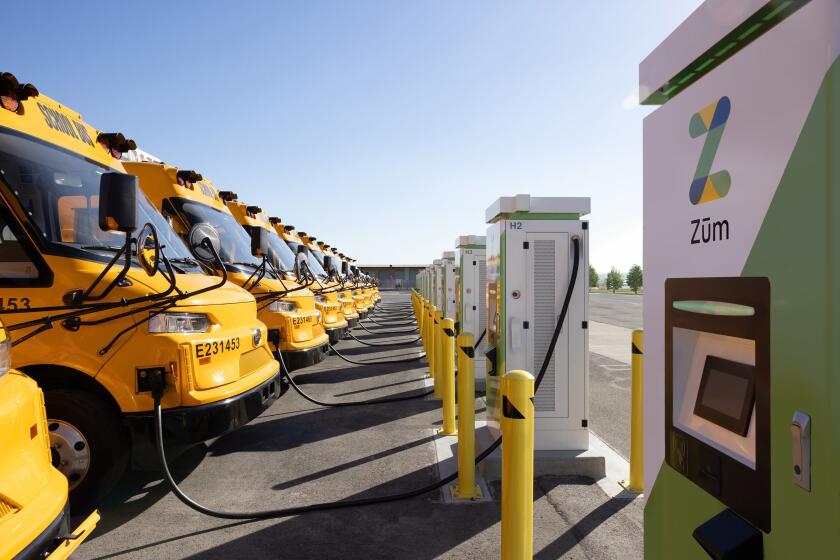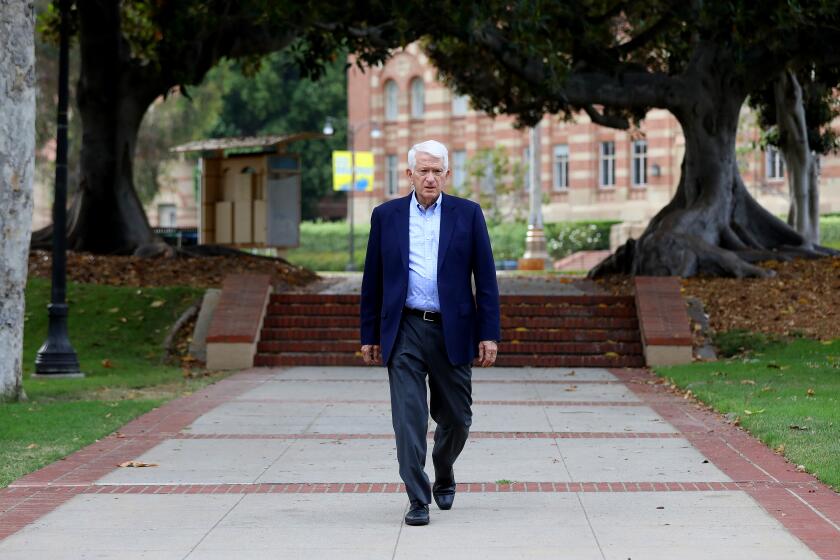Cable Firms Encourage High-Tech Classrooms : Communications: Exhibit at national convention shows schoolroom of the future wired for learning.
Instead of blackboards, there are video screens, computers instead of textbooks and CD-ROM players on every desk.
A peek inside the classroom of the future shows these high-tech devices, once considered the domain of business, as standard learning tools--just like textbooks are today.
That was at least one vision emerging from the National Cable Television Assn.’s convention, which concluded Wednesday, where an exhibit of the classroom of the future was on display.
While the exhibit was forward-looking, it also highlighted how existing cable technology is used to enhance education.
Since 1989, the cable industry has hooked up thousands of elementary and secondary schools to cable. It provides more than 525 hours of commercial-free educational programs to schools each month.
Since last May, Turner Educational Services, a division of Turner Broadcasting Co., has been offering schools the opportunity to take electronic field trips.
Students using TV sets or computers connected to cable and satellites have been able to “visit” a national park in Kenya and tour a battlefield in Gettysburg, all without leaving the classroom.
It’s all done live with experts on hand to field students’ questions relayed by computer, fax or phone.
“It melts the barriers of time and distance in the classroom,” said Gary Rowe, a senior vice president at Turner.
For an entire school to go on one trip, it would have to pay $395, but Turner, which does not offer the service for a profit, offers prorated fees based on the number of students who participate. The money is used to cover production costs.
In another project, Lightspan Partnership Inc. is working with cable and telephone companies to link schools and homes together so that parents, using a computer or specially equipped TV can tap into a database at the school and check on their children’s homework assignments, send and receive messages from teachers and get other information.
“We’re bringing the classroom right into the living room,” said Harrison Miller, Lightspan vice president, adding that research shows that students do better when their parents are involved. Lightspan develops reading and math materials that are distributed over cable and telephone lines for classroom use.
To help teachers, who still find programming a VCR troublesome, Cable in the Classroom, an educational group backed by the cable industry, and a division of Philips Consumer Electronics Co. have created a new VCR, said Bobbi Kamil, executive director of Cable in the Classroom.
By following a couple of simple commands on a computer, a teacher can select from an array of educational TV programs to record. With the click of a mouse, the selections are downloaded to the special VCR, which is connected to the computer. The VCR records the programs selected.
For others who need more intensive help, Tele-Communications Inc., the nation’s largest cable company, recently opened a training center in Denver for teachers, parents and school board members to learn about new technologies, how to use them and how they can help in the classroom. About 400 people have used the center, said Hattie Owen, who oversees it.
Some companies are working on making the classroom more accessible from home. Jones Education Networks, a division of cable company Jones Intercable, is putting together a system that would let people buy education courses on demand from their TV sets--meaning they wouldn’t have to sign up in advance.
They would select a course, ranging from Spanish and guitar lessons to college credit courses, and pay for it over the TV set, said Jim Carlson, a vice president at Jones Intercable.
More to Read
Start your day right
Sign up for Essential California for news, features and recommendations from the L.A. Times and beyond in your inbox six days a week.
You may occasionally receive promotional content from the Los Angeles Times.






